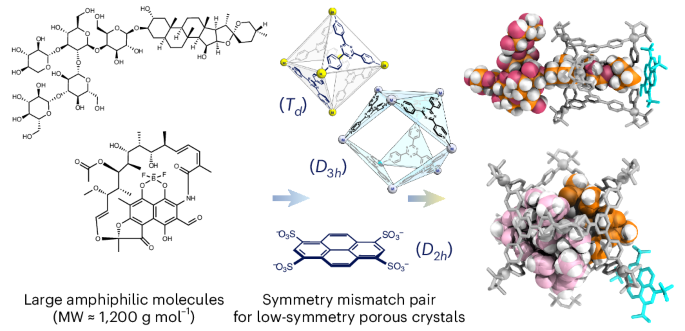2025-03-06 東京大学
<関連情報>
- https://www.t.u-tokyo.ac.jp/press/pr2025-03-06-001
- https://www.t.u-tokyo.ac.jp/hubfs/press-release/2025/0306/001/text.pdf
- https://www.nature.com/articles/s41557-025-01750-x
S対称性ミスマッチ戦略による結晶性スポンジとしての超分子配位ケージ upramolecular coordination cages as crystalline sponges through a symmetry mismatch strategy
Wei He,Yikuan Yu,Kenta Iizuka,Hiroki Takezawa & Makoto Fujita
Nature Chemistry Published:05 March 2025
DOI:https://doi.org/10.1038/s41557-025-01750-x

Abstract
The crystalline sponge method enables single-crystal X-ray diffraction analysis of guests absorbed within single-crystalline porous materials. However, its application with large or highly polar guests remains challenging. In this study, we addressed some of these limitations using palladium-based octahedron-shaped M6L4 (Td) coordination cages as crystalline sponges. The key to facilitate the crystallization of the cage is the addition of large aromatic polysulfonates (‘sticker’ anions); the symmetry mismatch between the cage and the sticker (D2h) results in a low-symmetry space group (P1¯), preventing guest disorder and leading to the formation of guest-accessible channels in the crystal. Guests can be encapsulated either before or after cage crystallization. The size and host–guest properties of the cavity enable analysis of a broad range of compounds, including water-soluble molecules, large amphiphilic molecules (molecular weight of ~1,200) and molecular aggregates. We have demonstrated the versatility of the cage–sticker strategy through its application to a triaugmented triangular-prism-shaped M9L6 cage, extending the guest scope to medium-sized pharmaceutical molecules.

